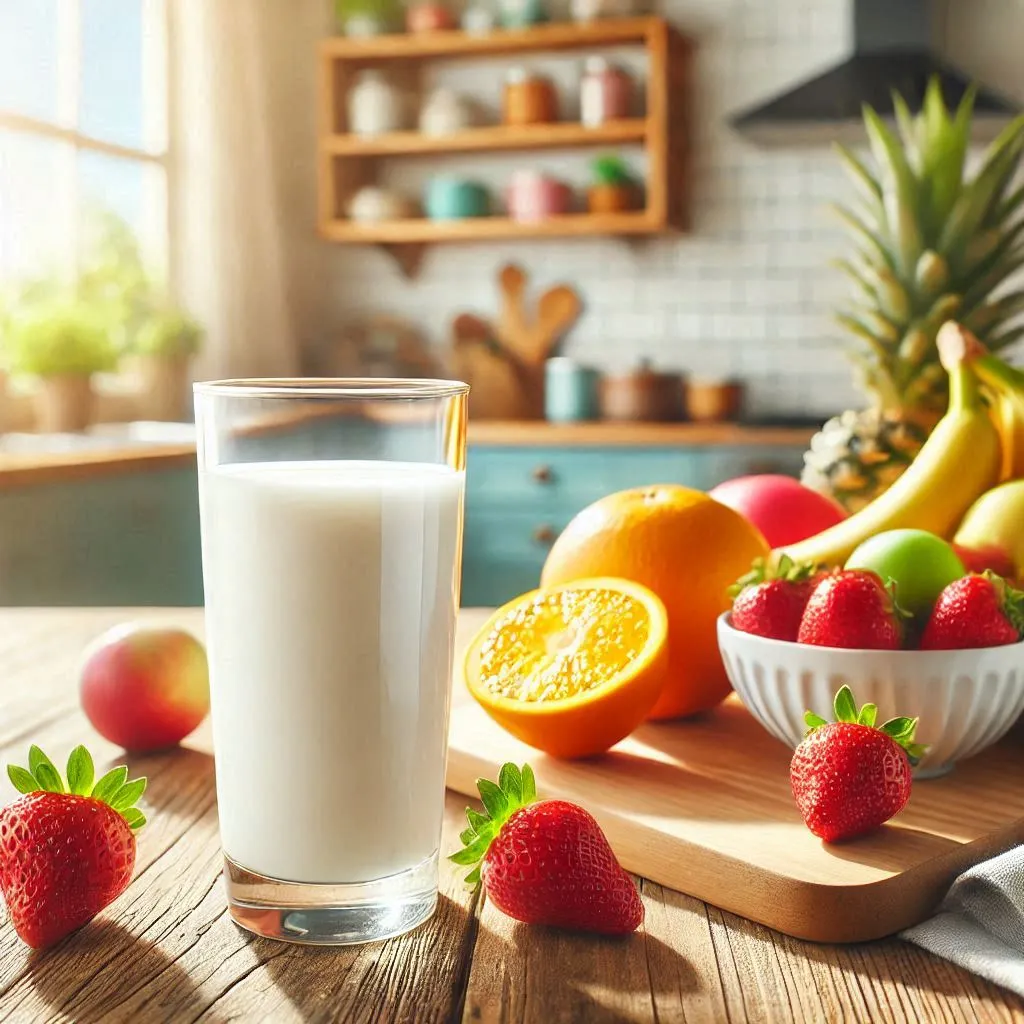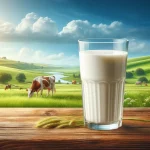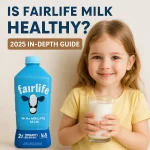- Top 10 Celsius Drink: The Ultimate 2025 Guide - 08/07/2025
- Prime Drink Comprehensive Deep Dive 2025 (10K+ word) - 08/05/2025
- Top Alani Energy Drink: 2025 Deep Dive(10K+ word) - 08/04/2025

Table of Contents
Milk: 2025 A Comprehensive Guide
Milk is a staple in diets around the world, known for its nutritional value, culinary versatility, and cultural significance. In this article, we delve into the science, health benefits, types, and global trends of milk, supported by authoritative data, references, and expanded insights.
Nutritional Composition of Milk
Milk is a nutrient-rich beverage that provides a wide array of essential elements crucial for human health. Below is a detailed breakdown of the typical nutritional content per 100 ml of cow’s milk:
| Nutrient | Quantity |
|---|---|
| Energy | 42 kcal |
| Protein | 3.4 g |
| Fat | 1.0 g |
| Carbohydrate | 5.0 g |
| Calcium | 120 mg |
| Vitamin D | 0.05 µg |
| Vitamin B12 | 0.4 µg |
(Source: USDA FoodData Central)
Calcium in milk is particularly bioavailable, making it one of the best dietary sources for bone health. Additionally, milk contains important trace minerals such as phosphorus, magnesium, and potassium, which play a role in various physiological functions.
Types of Milk
Milk comes in various forms to cater to diverse dietary preferences, nutritional needs, and culinary uses. Let’s explore the main categories:
- Cow’s Milk: The most widely consumed type, available in whole, skimmed, and semi-skimmed versions. It is rich in protein and calcium and is fortified with vitamin D in many regions.
- Goat’s Milk: Known for its slightly tangy taste and unique protein profile, goat’s milk is often easier to digest for individuals with sensitivities to cow’s milk.
- Buffalo Milk: Popular in South Asia, it is creamier and higher in fat than cow’s milk, making it ideal for producing dairy products such as paneer and yogurt.
- Plant-Based Milk: Almond, soy, oat, and coconut milk have become mainstream alternatives for those with lactose intolerance or following vegan diets. Each type has unique characteristics—soy milk, for example, is protein-rich, while almond milk is low in calories.
- A2 Milk: A specialized form of cow’s milk that contains only the A2 beta-casein protein. It’s marketed as being easier on digestion compared to conventional milk.
Health Benefits of Milk
Milk has long been celebrated for its numerous health benefits, supported by decades of scientific research. Below are some of the key benefits:
- Bone Health: The high calcium and vitamin D content in milk is essential for bone mineralization, reducing the risk of osteoporosis and fractures.
- Muscle Growth and Repair: Milk provides complete proteins containing all essential amino acids, making it an excellent choice for athletes and those recovering from injuries.
- Hydration and Electrolyte Balance: Milk is a natural source of electrolytes like potassium and sodium, which help maintain hydration levels after intense physical activity.
- Heart Health: Potassium in milk can support cardiovascular health by helping to regulate blood pressure levels.
- Weight Management: Dairy proteins have been shown to promote satiety, potentially aiding in appetite control and weight management.
Lactose Intolerance and Alternatives
While milk offers numerous benefits, not everyone can consume it. Lactose intolerance affects a significant portion of the global population, particularly in regions such as East Asia and Sub-Saharan Africa. For these individuals, lactose-free milk and plant-based alternatives provide viable options. Advances in enzymatic processing have improved the taste and nutritional profiles of these substitutes.
Global Milk Production and Consumption
Milk Production
The global milk industry is a vital sector, with production steadily increasing to meet rising demand. Below is a table highlighting the top milk-producing countries for 2023:
| Country | Production (Million Tons) |
|---|---|
| India | 220 |
| USA | 102 |
| China | 34 |
| Brazil | 34 |
| Germany | 33 |
(Source: FAO)
India, the world’s largest producer, primarily focuses on buffalo and cow milk, catering to domestic needs and export markets. The United States leads in high-yield dairy farming practices, emphasizing efficiency and technology.
Consumption Trends
Milk consumption trends reveal regional and generational variations. In Western countries, traditional dairy remains popular, but plant-based alternatives are rapidly gaining market share. Emerging trends include:
- Increasing demand for lactose-free milk.
- The rise of organic and grass-fed dairy products.
- A growing interest in milk’s use in sports nutrition and functional beverages.
- Adoption of fortified plant-based milks enriched with calcium, vitamin D, and B12.
Environmental Impact
The environmental impact of milk production is a significant concern. Key challenges include:
- Methane Emissions: Ruminant animals like cows produce methane, a potent greenhouse gas, during digestion.
- Water Usage: Dairy farming requires substantial water resources, particularly for feed crops.
- Land Use: Deforestation and habitat loss are linked to the expansion of agricultural land for dairy farming.
Efforts to mitigate these impacts include sustainable dairy farming practices, such as:
- Transitioning to renewable energy sources.
- Implementing manure management systems to capture methane.
- Developing plant-based alternatives with lower environmental footprints.
Controversies and Myths
Milk is often at the center of debates regarding health and ethics. Common misconceptions include:
- “Milk causes mucus production”: Scientific studies show no significant link between milk consumption and increased mucus.
- “Dairy weakens bones”: On the contrary, milk’s calcium content supports bone health.
- “Milk is unnatural for adults”: While some populations are lactose intolerant, many have evolved to digest lactose effectively through adulthood.
Ethical concerns surrounding animal welfare in industrial dairy farming have also spurred interest in plant-based alternatives and lab-grown dairy products.
Innovations in the Dairy Industry
The dairy industry is witnessing innovation in response to evolving consumer preferences and sustainability challenges. Highlights include:
- Precision Fermentation: Producing milk proteins through microbial processes, offering a sustainable alternative to traditional dairy.
- Smart Farming Technologies: Utilizing AI and IoT devices to optimize dairy farming efficiency and animal welfare.
- Fortified Dairy Products: Enhanced milk and yogurt fortified with probiotics, omega-3s, and other nutrients to address specific health concerns.

Conclusion
Milk remains a cornerstone of global nutrition, offering unparalleled benefits for health, culinary applications, and cultural traditions. As dietary preferences shift and environmental awareness grows, the future of milk lies in balancing tradition with innovation. Whether through sustainable practices or emerging alternatives, milk’s role in our diets continues to evolve.
References
- USDA FoodData Central: https://fdc.nal.usda.gov
- FAO Milk Production Statistics: http://www.fao.org
- Harvard Health on Dairy: https://www.health.harvard.edu
- National Dairy Council: https://www.usdairy.com
- IPCC Report on Methane Emissions: https://www.ipcc.ch
Recommended Articles:
What Can I Feed a Stray Cat: 2025 Comprehensive Guide – love a happy home
What to Do if You Find a Stray Dog 2025 – love a happy home
- Honey Baked Ham 2025 In-Depth Guide
- How to Organize Kitchen Cabinets 2025 In-Depth Guide
- 100 Easy Dinner Ideas 2025 In-Depth Guide
- Easy Dinner Recipes: 2025 In-Depth Guide
- Amazon Best Sellers in Home Kitchen: Top 10 2025
- KFC Menu: In-Depth Guide 2025
- How to Make McDonald’s Grimace Shake at Home 2025
- Sonic Breakfast Hours: A Complete Guide 2025
- Burger King Breakfast Hours: Complete Guide 2025
- Panera Breakfast Hours: A Complete Guide 2025
- Carl’s Jr Breakfast Hours: A Complete Guide 2025
- Golden Corral Breakfast Hours: Complete Guide 2025
- Whataburger Breakfast Hours: Complete Guide 2025
- Hardee’s Breakfast Hours: Complete Guide 2025
- Wendy’s Breakfast Hours: A Comprehensive Guide 2025
- Taco Bell Breakfast Hours: Complete Guide for 2025
- Burger King Breakfast Hours: A Comprehensive Guide 2025
- Chick-fil-A Breakfast Hours: In-Depth Guide 2025
- 100 Best Milks: A Comprehensive Guide 2025
- 100 Breakfast Ideas: Nutritious Delicious 2025
- 100 Easy Dinner Ideas: Delicious Meals 2025
- Dubai Chocolate Bar: A Sweet Journey 2025
- What to Make for Dinner 2025
- Easy Dinner Recipes 2025(In-Depth)
- Easy Dinner Recipes for Busy Weeknights 2025
- Best School Lunch Ideas 2025
- Tabs Chocolate: A Delicious Revolution 2025
- Dubai Chocolate Bar: A Sweet Luxury Experience 2025
- Cheap Dinner Ideas 2025
- Chicken Dinner Ideas for Every Occasion 2025
- Ground Beef Dinner Ideas for Every Occasion 2025
- School Lunch Programs: Impact and Importance 2025
- Yeti Lunch Boxes: Ultimate Guide 2025
- Perfect Lunch Bag: A Ultimate Guide 2025
- 100 Quick Dinner Ideas 2025 In-Depth Guide
- Dinner Ideas: For Every Occasion 2025
- Easy Dinner Ideas: 2025 In-Depth Guide
- McDonald Breakfast Hours: 2025 In-Depth Guide
- Breakfast Burrito: 2025 A Delicious Start to Your Day
- Best Breakfast Ideas for a Healthy Start 2025
- What Should I Eat for Lunch 2025
- Easy Lunch Ideas for Busy Days 2025
- Easy Lunch Ideas 2025
- What Time Does McDonald’s Stop Serving Breakfast 2025?
- Healthy Breakfast Ideas 2025
- Milk: 2025 A Comprehensive Guide
- Fairlife Milk: 2025 A Comprehensive Overview
- Honeycomb Cereal: 2025 A Comprehensive Analysis
- Is Fairlife Milk Healthy? 2025 In-Depth Guide
- Snack Wrap McDonald’s: A Deep Dive
- How Much Does a Gallon of Milk Weigh?
- How to Make Delicious Mochi Donuts at Home
- Best Egg Laying Chickens(6 Types)
- How Many Grams of Protein in an Egg(1 In-Depth Guide)
- How to Tell If an Egg Is Bad(1 Detailed Guide)
- Creative Spongebob Party Food 2025 In-Depth Guide
- Easy Spongebob Party Food Ideas 2025 In-Depth
- Best Spongebob Party Food Ideas(10 Types)
- Best Creamy Tuscan Chicken Recipe(7 Parts Detailed)
- Best Monday Food Deals(5 Types Perfect Choice)
- Best 11 Monday Restaurant Deals(Very Detailed)
- How To Make Canes Sauce 2025 In-Depth Guide
- Best Hot Sauce Recipe(7 Steps)
- Best Seasonings for Elevating Your Cooking(12 types)
Amazon Best Sellers in Home & Kitchen: Top 10 Must-Have Products for Your Home 2025
Need to spruce up your home without the hassle? Amazon's got the goods - from game-changing kitchen gadgets to cozy bedding that'll make you never want to leave your house. The best part? These picks aren't just popular, they're actually worth your hard-earned cash (with thousands of happy customers backing them up).
We're breaking down:
🏆 The 10 home & kitchen essentials everyone's buying
⭐ Real-deal reviews from people who actually use this stuff
🔗 Easy links so you can grab 'em quick
No fluff - just the home upgrades that deliver. Let's check out what's worth adding to your cart!
1. Owala FreeSip Insulated Stainless Steel Water Bottle
🚀 Why it’s a Best Seller: A leak-proof, insulated bottle with a unique FreeSip design—perfect for on-the-go hydration!
Key Features:
- 24 oz capacity – Great for sports, travel, and daily hydration.
- Innovative FreeSip spout – Allows for sipping upright through the built-in straw or tilting back for chugging.
- Double-wall insulation – Keeps drinks cold for up to 24 hours.
- BPA-free and dishwasher safe – Safe and easy to clean.
Why Customers Love It:
✅ Durable & stylish – The Denim color is sleek, and the stainless steel construction is built to last.
✅ Great for travel – Leak-proof lid prevents spills in bags.
✅ Comfortable to hold – The ergonomic design makes it easy to carry.
⭐ Rated 4.8/5 on Amazon with thousands of reviews!
2. Stanley Quencher H2.0 Tumbler with Handle & Straw
🔥 Why it’s a Best Seller: The viral Stanley tumbler is a hydration game-changer with a 30 oz capacity and ergonomic handle!
Key Features:
- FlowState 3-position lid – Prevents spills and allows easy drinking.
- Double-wall vacuum insulation – Keeps drinks cold for up to 11 hours and ice cold for 2 days.
- Comfort grip handle – Perfect for carrying around.
- Fits in car cup holders – Designed for easy travel.
Why Customers Love It:
✅ Trendy and practical – Available in multiple colors, including the beautiful Peony shade.
✅ Large capacity – Holds enough water for a full day.
✅ Keeps drinks cold for hours – Ideal for hot summer days!
⭐ Over 50,000 reviews and a 4.9/5 rating!
3. TERRO T300B Indoor Liquid Ant Killer
🐜 Why it’s a Best Seller: Say goodbye to ant infestations with this highly effective liquid ant bait.
Key Features:
- Pre-filled bait stations – Easy to use and mess-free.
- Targets the entire colony – Not just the ants you see.
- Works within days – Quickly eliminates ant infestations.
Why Customers Love It:
✅ Highly effective – Works on various ant species.
✅ Safe for indoor use – No strong chemical smells.
✅ Affordable & long-lasting – Comes with 12 bait stations!
⭐ 4.7/5 stars with 70,000+ reviews!
4. Queen Size 4-Piece Sheet Set - Hotel Luxury Bedding
🛏️ Why it’s a Best Seller: Ultra-soft, breathable, and wrinkle-free hotel-quality bed sheets!
Key Features:
- Deep pockets – Stays securely on mattresses.
- Soft & breathable – Made from high-quality microfiber.
- Wrinkle-free & easy care – Machine washable.
- Oeko-Tex Certified – Safe and eco-friendly materials.
Why Customers Love It:
✅ Super soft & luxurious – Feels like a 5-star hotel.
✅ Perfect fit – Stays in place on all mattress sizes.
✅ Easy to maintain – No ironing needed!
⭐ 4.6/5 stars and a customer favorite!
5. upsimples 8x10 Picture Frame
🖼️ Why it’s a Best Seller: A sleek, modern photo frame that enhances any home decor.
Key Features:
- Two display options – 5x7 with mat or 8x10 without mat.
- Wall-mounted & tabletop display – Versatile design.
- Durable & stylish – Black frame suits any decor.
Why Customers Love It:
✅ Lightweight & easy to hang
✅ Protects photos with HD plastic cover
✅ Affordable & stylish home decor
⭐ 4.5/5 rating from thousands of happy buyers!
6. Zevo Flying Insect Trap & Cartridge
🦟 Why it’s a Best Seller: A plug-in, mess-free indoor bug trap that uses blue & UV light to attract and eliminate flying insects.
Key Features:
- Attracts & traps gnats, house flies, and fruit flies – No chemicals or sprays needed.
- Uses blue & UV light technology – Scientifically designed to lure insects.
- Mess-free & odor-free – No dead bug clean-up.
- Compact and stylish – Fits seamlessly in any room.
Why Customers Love It:
✅ Works effectively indoors – Perfect for kitchens, bedrooms, and living areas.
✅ No harmful chemicals – Safe for homes with kids and pets.
✅ Replaceable cartridges – Easy to maintain for long-term use.
⭐ Rated 4.6/5 with thousands of positive reviews!
7. Utopia Bedding Queen Bed Sheets Set
🛏️ Why it’s a Best Seller: Soft, shrink-resistant, and easy-care microfiber sheets that feel as luxurious as high-end hotel bedding.
Key Features:
- Includes 4 pieces – 1 flat sheet, 1 fitted sheet, and 2 pillowcases.
- Brushed microfiber fabric – Ultra-soft and breathable.
- Fade & shrink resistant – Maintains its quality after multiple washes.
- Deep pockets & secure fit – Fits mattresses up to 16 inches thick.
Why Customers Love It:
✅ Super soft and comfortable – Perfect for all seasons.
✅ Easy to wash & maintain – Machine washable and wrinkle-free.
✅ Affordable luxury – Feels expensive without the high price tag.
⭐ 4.6/5 rating from over 100,000 buyers!
8. Barossa Design Plastic Shower Liner
🚿 Why it’s a Best Seller: A premium waterproof shower liner that keeps your bathroom dry and stylish.
Key Features:
- Made from PEVA material – Non-toxic and environmentally friendly.
- Waterproof & mildew-resistant – Prevents mold and soap scum buildup.
- Rustproof grommets & 3 magnets – Provides extra stability and durability.
- Fits standard-size showers – Lightweight and easy to install.
Why Customers Love It:
✅ Clear, minimalist design – Blends well with any bathroom decor.
✅ Durable & long-lasting – Resistant to wear and tear.
✅ Easy to clean – Simply wipe or rinse to maintain freshness.
⭐ 4.7/5 stars and a top-rated shower liner!
9. Utopia Bedding Throw Pillow Inserts (Pack of 2)
🛋️ Why it’s a Best Seller: Fluffy, soft, and supportive throw pillows that enhance the comfort and look of your couch, bed, or chairs.
Key Features:
- Comes in a set of two – Perfect for pairing on sofas or beds.
- 18 x 18 inches size – Ideal for standard throw pillow covers.
- High-quality polyester filling – Provides plush support.
- Durable and breathable – Keeps shape over time.
Why Customers Love It:
✅ Soft and supportive – Adds a cozy feel to any space.
✅ Perfect for decorating – Works well with various pillow covers.
✅ Easy to maintain – Machine washable for convenience.
⭐ 4.5/5 rating from thousands of happy customers!
10. Utopia Bedding Waterproof Mattress Protector
🛌 Why it’s a Best Seller: A breathable, waterproof mattress cover that protects against spills, allergens, and dust mites.
Key Features:
- 100% waterproof protection – Shields against spills, sweat, and stains.
- Soft terry cloth top layer – Feels comfortable and breathable.
- Fitted design with stretchable pockets – Stays securely in place.
- Hypoallergenic material – Great for allergy sufferers.
Why Customers Love It:
✅ Protects your mattress investment – Extends mattress lifespan.
✅ Doesn’t change mattress feel – Comfortable and silent.
✅ Easy to clean – Machine washable for hassle-free maintenance.
⭐ Rated 4.7/5 by satisfied customers!
Final Thoughts: Upgrade Your Home Today!
These home essentials are bestsellers for good reason - they actually work, look great, and make life easier. Whether you're after:
• The perfect water bottle
• Stylish decor that doesn't break the bank
• Bedding you'll want to live in
• Pest solutions that really work
...thousands of shoppers swear by these picks.
👉 Tap those links to give your home an instant upgrade!
So what's going in your cart first? Drop us a comment below - we want to know!
✅ Pro Tip: Want the hottest Amazon finds? Save this page and come back for fresh picks!
🔥 Smart shopping = Better living 🔥
🎯 Don’t Miss Out — These Are Reader-Favorite Bestsellers You’ll Love Too 👇
| # | 🎁 Product | 💬 Why It Converts | 🔗 Quick Action |
|---|---|---|---|
| ✅ 1 | Exploding KittensThe Wildly Popular Card Game | 🔥 100,000+ rave reviews🤣 Fun for all ages🎉 #1 party game choice | 👉 Click to Check Price |
| 😂 2 | Funny Dad T-Shirt“You Can’t Scare Me, I Have Kids” | 👕 Viral dad gift🎂 Perfect for birthdays & Father’s Day💬 Gets people laughing instantly | 👉 See It in Action |
| 🕯️ 3 | Luxury Candle Gift SetElegant 1-Wick, Spa Fragrance | 🧘♀️ Instant relaxation🎁 Beautifully boxed for gifting💡 Affordable luxury | 👉 Treat Yourself or Gift Now |
| 🔍 4 | Tile Bluetooth TrackerFind Anything in Seconds | 🛠️ Life-saving tech🧓 Great for parents, teens, travelers📱 Works with your phone | 👉 Never Lose Anything Again |
| 📘 5 | Atomic Habits by James ClearTransform Your Daily Life | 📖 20M+ readers worldwide🔑 Simple steps, big results🎓 Top self-growth book | 👉 Read What Everyone’s Talking About |
✅ Why These Items Sell:
| 💡 Trigger | Example in Table | How It Helps Conversion |
|---|---|---|
| ✅ Social Proof | “100,000+ rave reviews” | Builds trust instantly |
| 🎯 Use Case Clarity | “Great for family game night” | Reduces decision friction |
| 🚀 Action Verbs | “Click to check price” | Encourages immediate action |
| 🔥 Urgency & Emotion | “Don’t miss out” / “Treat yourself” | Triggers impulse buying |
| 🎁 Gifting Potential | “Perfect for birthdays & holidays” | Taps into universal purchase intent |
❤️ Your Click Makes a Difference
Every purchase made through these links helps support this site and keeps great content coming — Thanks!
💬 Why Tip? It’s Not Just Money — It’s Motivation ❤️
| 😊 What You Got | 🎁 What I Get | 🔗 What You Can Do |
|---|---|---|
| ✔️ A smile or laugh | ✔️ A reason to keep creating | 👉 Buy me a coffee ☕️ |
| ✔️ Useful tips, insights, or ideas | ✔️ Proof that this content helps | 👉 Click the support button 💸 |
| ✔️ Fun, relatable content | ✔️ Motivation to go deeper & better | 👉 Leave a tip + kind feedback 🙌 |
| ✔️ Ad-free reading experience | ✔️ A little financial breathing room | 👉 $1 isn’t too little, $10 isn’t too much 🎉 |
| ✔️ A sense of connection | ✔️ The joy of being seen and supported | 👉 Let me know you’re out there 👀 |
❤️ If you made it this far, maybe that’s your sign to support? Every tip matters!

































































